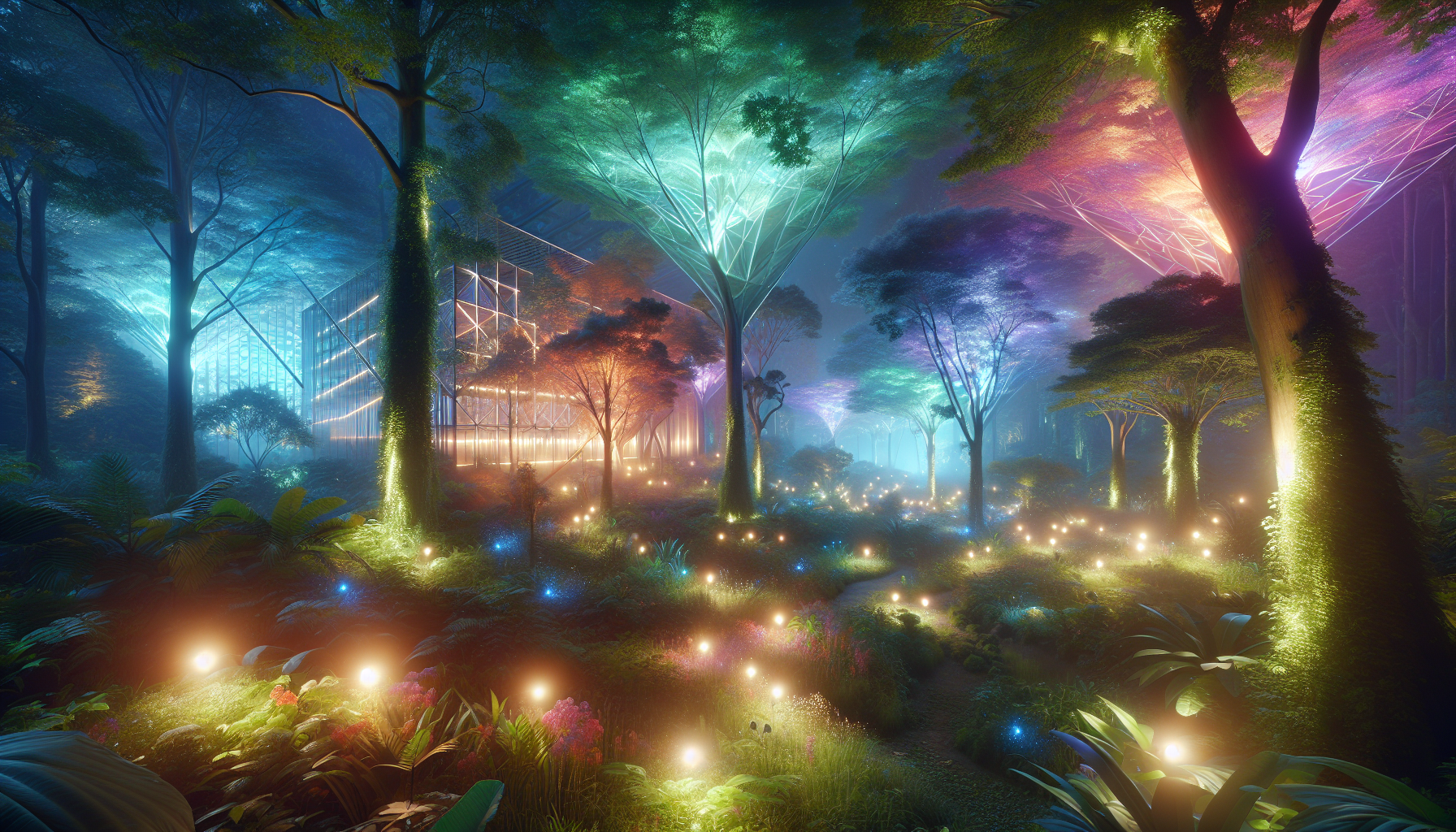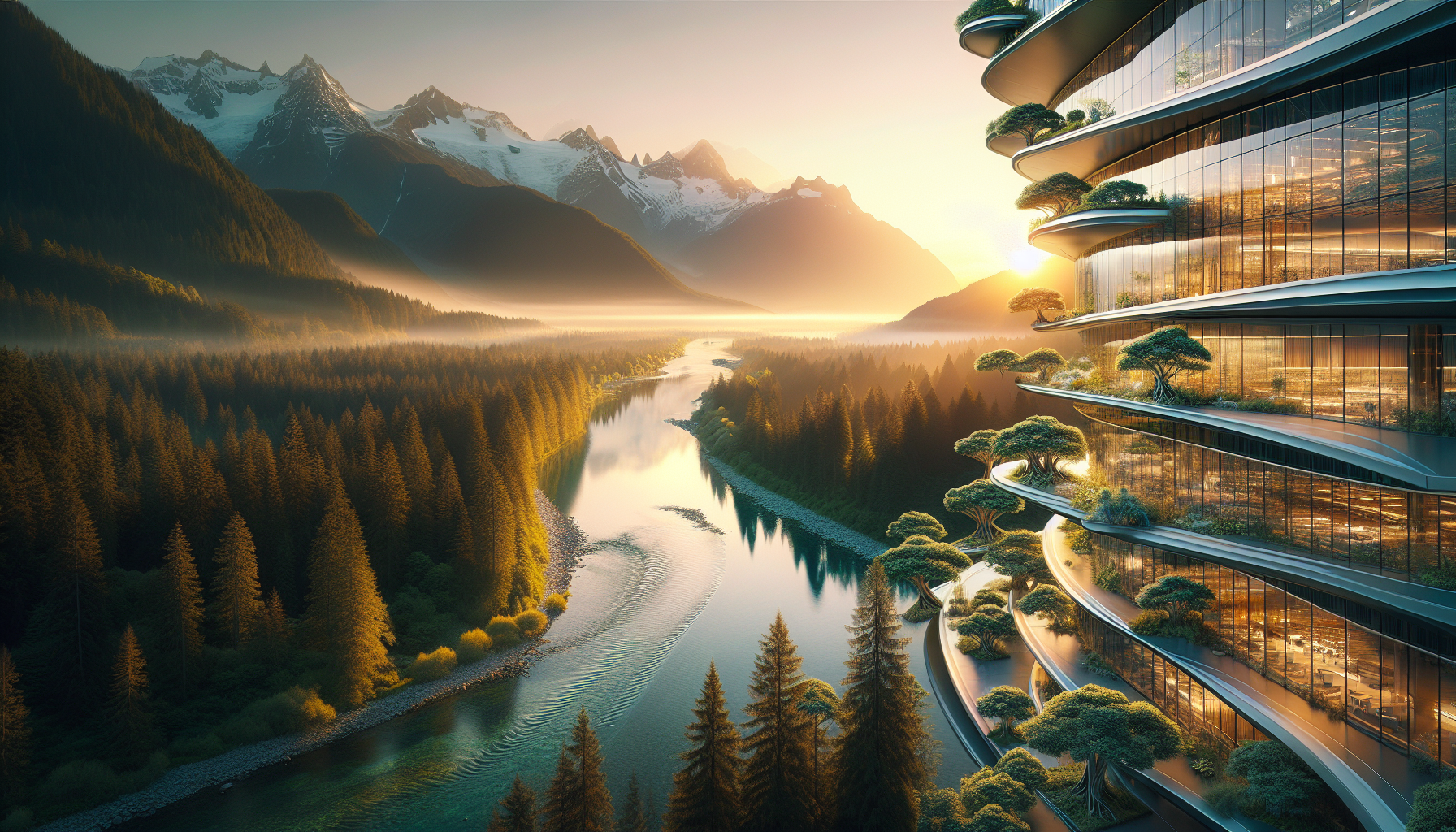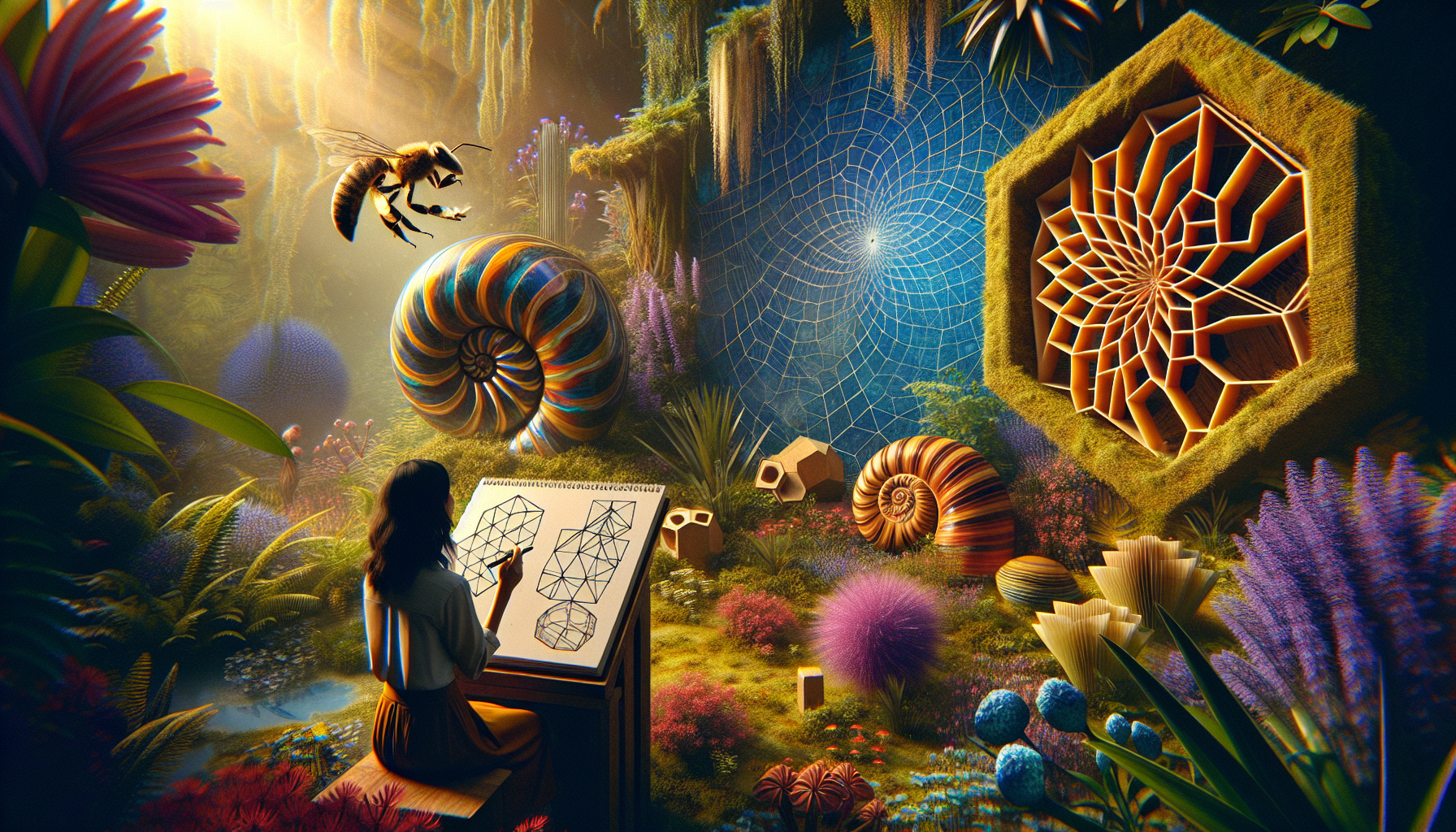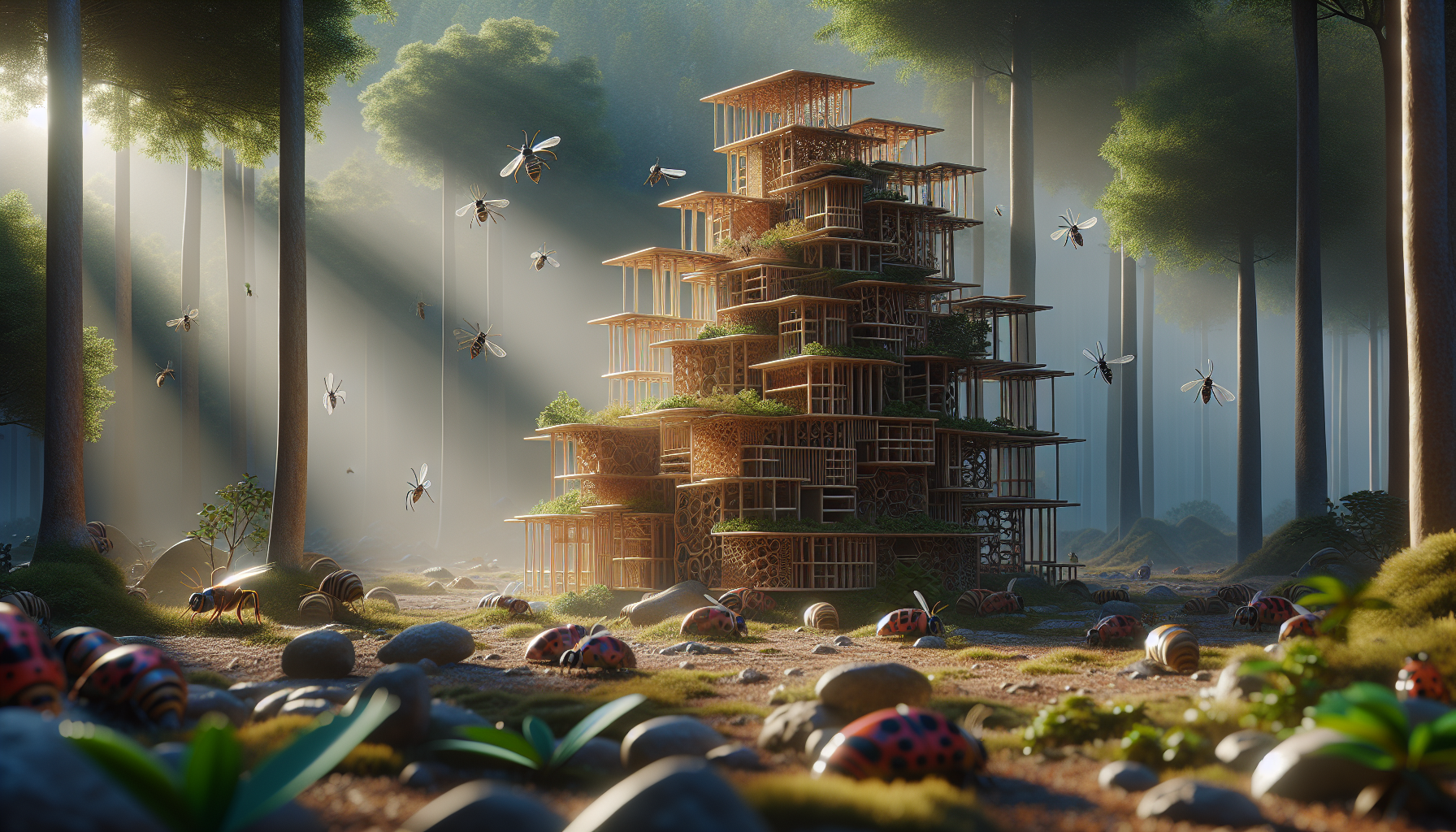In the heart of our ever-evolving world, where urban landscapes continually encroach upon the natural habitats of countless species, there emerges a fascinating intersection of design, ecology, and innovation. This is the domain of Firefly Constructions—an avant-garde approach that combines architectural ingenuity with ecological sensitivity. Imagine walking through a serene garden at dusk, where soft, ambient lights dance among the foliage, drawing the enchanting glow of fireflies and other specific insects to your very doorstep. Not only does this bring a touch of magic to the environment, but it also plays a crucial role in preserving the delicate balance of local ecosystems. 🌿✨
At the core of this visionary concept lies a profound understanding of microstructural design and its impact on biodiversity. The idea is simple yet revolutionary: by creating structures that mimic the natural habitats of certain insects, we can attract these creatures, promoting their presence in urban settings where they are often scarce. Firefly Constructions are not mere decorative installations; they are carefully crafted ecosystems that serve as sanctuaries for insects, thus supporting the broader ecological web. This blog post will delve into the captivating world of these constructions, exploring the science behind their design, the benefits they offer, and the steps involved in creating your own insect-friendly haven.
The journey begins with an exploration of the microstructural elements that make these constructions so effective. We’ll examine the specific materials and shapes that appeal to different insect species, focusing on how these designs replicate the environmental cues insects rely on in nature. For instance, the use of specific wavelengths of light can attract fireflies, while particular plant arrangements can serve as both food sources and shelter for other insects. By understanding these intricate details, designers and homeowners alike can transform ordinary spaces into vibrant ecosystems teeming with life.
Furthermore, we’ll discuss the broader ecological and aesthetic benefits of these constructions. On an ecological level, attracting a diverse array of insects contributes to pollination, pest control, and the overall health of the environment. These tiny creatures play a pivotal role in maintaining the balance of our ecosystems, and by fostering their presence, we support the health of our gardens, parks, and urban areas. Aesthetically, Firefly Constructions offer a unique way to beautify spaces, blending functionality with art. The gentle illumination and the movement of insects create a living artwork, a dynamic and ever-changing scene that captivates the senses and invites reflection.
Finally, we’ll provide practical guidance on how to implement these ideas in your own environment. From selecting the right plants and materials to designing layouts that maximize ecological impact, this guide will empower you to create spaces that are not only visually stunning but also ecologically beneficial. Whether you’re a seasoned gardener, an urban planner, or simply someone with a love for nature, you’ll find inspiration and actionable insights to help you embark on this rewarding journey. By the end of this article, you’ll not only appreciate the beauty of Firefly Constructions but also understand their potential to transform our relationship with the natural world. 🌺🐝
Join us as we illuminate the path to a harmonious coexistence with nature, where every glow and flutter becomes a testament to the power of thoughtful design and ecological stewardship.
Understanding Firefly Construction: The Art of Microstructural Design
Fireflies are captivating creatures, often associated with warm summer nights and magical glows. However, beyond their enchanting luminescence lies a complex world of microstructural design that serves a greater ecological purpose. This article delves into how firefly constructions, inspired by these insects, can be utilized to create microstructural designs aimed at attracting specific insects while simultaneously enhancing the aesthetic appeal of the surroundings.
The core idea behind firefly constructions is to mimic the natural environments that attract specific insect species. By understanding the intricacies of firefly habitats, designers and architects can develop structures that not only serve functional purposes but also contribute to ecological balance. The challenge lies in creating designs that are both attractive to target insect species and visually appealing to humans.
To achieve this, designers must consider several factors, including the type of light emitted, the materials used, and the overall structure’s integration into its environment. This involves a multi-disciplinary approach, combining insights from biology, architecture, and environmental science to create structures that resonate with both insects and humans.
The Science Behind Firefly Attraction
Fireflies use bioluminescence for various purposes, primarily for mating and communication. The light emitted by these insects is produced through a chemical reaction involving luciferin, luciferase, and oxygen. This process is not only efficient but also environmentally friendly, as it generates light without heat. This efficiency is something that can be emulated in microstructural designs to create sustainable lighting solutions.
In designing firefly-inspired structures, understanding the specific wavelengths of light that attract different insects is crucial. For instance, certain wavelengths may attract pollinators like bees and butterflies, while others may deter pests. By incorporating light-emitting diodes (LEDs) that replicate these wavelengths, designers can tailor their structures to attract desired insect species.
Additionally, the placement and intensity of these lights can influence insect behavior. Strategic placement can guide insects to specific areas, enhancing pollination or pest control. This approach requires a delicate balance, as overly bright or misaligned lights may disrupt natural behaviors or attract unwanted species.
Materials and Structure: The Building Blocks
The choice of materials is another critical aspect of firefly-inspired designs. Natural materials such as wood, bamboo, and stone can blend seamlessly into the environment, offering habitats for insects while providing aesthetic value. These materials can be treated or engineered to enhance their durability and resistance to environmental factors, ensuring the longevity of the structures.
Incorporating reflective surfaces can amplify the visual impact of the structures, simulating the glow of fireflies. Mirrors, polished metals, and glass can be strategically placed to reflect light and create an illusion of bioluminescence. These reflective elements can also be used to direct light in specific patterns, enhancing the visual appeal of the structures.
The structural design itself plays a role in attracting insects. Shapes that mimic natural forms, such as honeycombs or spirals, can be more appealing to certain species. These designs not only attract insects but also provide functional benefits, such as improved airflow or water drainage.
Practical Applications and Benefits
The applications of firefly constructions extend beyond aesthetic and ecological benefits. In urban settings, these structures can serve as green spaces that promote biodiversity, offering habitats for insects and small wildlife. They can also be integrated into public spaces, providing educational opportunities about ecology and sustainability.
One practical application is the development of urban gardens or green roofs that incorporate firefly-inspired designs. These spaces can enhance urban biodiversity, support pollinator populations, and contribute to the reduction of urban heat island effects. By attracting pollinators, these gardens can also improve the yield of fruit and vegetable plants, supporting local food production.
Moreover, firefly constructions can be used in agricultural settings to enhance crop production. By attracting beneficial insects such as bees and butterflies, these structures can improve pollination rates, leading to increased crop yields. This approach offers a sustainable alternative to chemical pesticides, reducing the environmental impact of agriculture.
Case Study: Successful Implementations
Several projects worldwide have successfully implemented firefly construction principles. For example, a community garden in Tokyo utilized firefly-inspired lighting and plant arrangements to attract specific pollinators, resulting in a flourishing ecosystem that supports a wide range of plant and insect species.
Similarly, a public park in Amsterdam integrated reflective surfaces and bioluminescent elements into its design, creating an enchanting nighttime environment that attracts both residents and tourists. This park serves as a model for how urban spaces can incorporate ecological design principles to enhance both biodiversity and community engagement.
These case studies highlight the potential of firefly constructions to transform environments and promote ecological balance. By learning from these successes, designers can continue to innovate and create spaces that are both functional and beautiful.
Challenges and Future Directions
While the potential of firefly constructions is immense, several challenges must be addressed to maximize their effectiveness. One primary challenge is ensuring that these structures are accessible and affordable. The integration of advanced technologies such as LEDs and bioluminescent materials can be costly, potentially limiting their widespread adoption.
Another challenge is balancing human and insect needs. While attracting beneficial insects is a primary goal, it’s essential to ensure that these structures do not become breeding grounds for pests or disrupt local ecosystems. Ongoing monitoring and research are necessary to refine designs and ensure they remain beneficial.
Looking to the future, advances in materials science and biotechnology may offer new opportunities for firefly constructions. Innovations such as bioengineered materials that mimic natural bioluminescence or self-sustaining ecosystems could further enhance the effectiveness and appeal of these structures.
Call to Action: Join the Movement
As we continue to explore the potential of firefly constructions, collaboration between designers, scientists, and communities will be crucial. By sharing knowledge and resources, we can develop innovative solutions that enhance biodiversity and promote sustainability.
To learn more about how you can contribute to this movement, watch the video below from the Science Channel on YouTube titled “The Secret World of Fireflies: A Symphony of Light.”
Whether you’re a designer, scientist, or simply someone passionate about ecology, there are numerous ways to get involved. By participating in local projects, supporting sustainable design initiatives, or simply educating others about the benefits of firefly constructions, you can help create a brighter, more sustainable future for all.
Comparative Table: Traditional Structures vs. Firefly Constructions
| Aspect | Traditional Structures | Firefly Constructions |
|---|---|---|
| Materials | Concrete, steel, glass | Natural materials, reflective surfaces |
| Energy Use | High energy consumption | Energy-efficient, bioluminescent elements |
| Ecological Impact | Limited biodiversity support | Promotes biodiversity, attracts pollinators |
| Aesthetic Appeal | Varies widely | Inspired by nature, visually enchanting |
Key Takeaways
- Firefly constructions blend aesthetics with ecological benefits, creating environments that attract specific insect species.
- These designs utilize natural materials, strategic lighting, and innovative structures to enhance their functionality and appeal.
- Practical applications range from urban gardens to agricultural settings, offering sustainable solutions to environmental challenges.
- While challenges exist, ongoing research and collaboration can drive further innovation in this field.
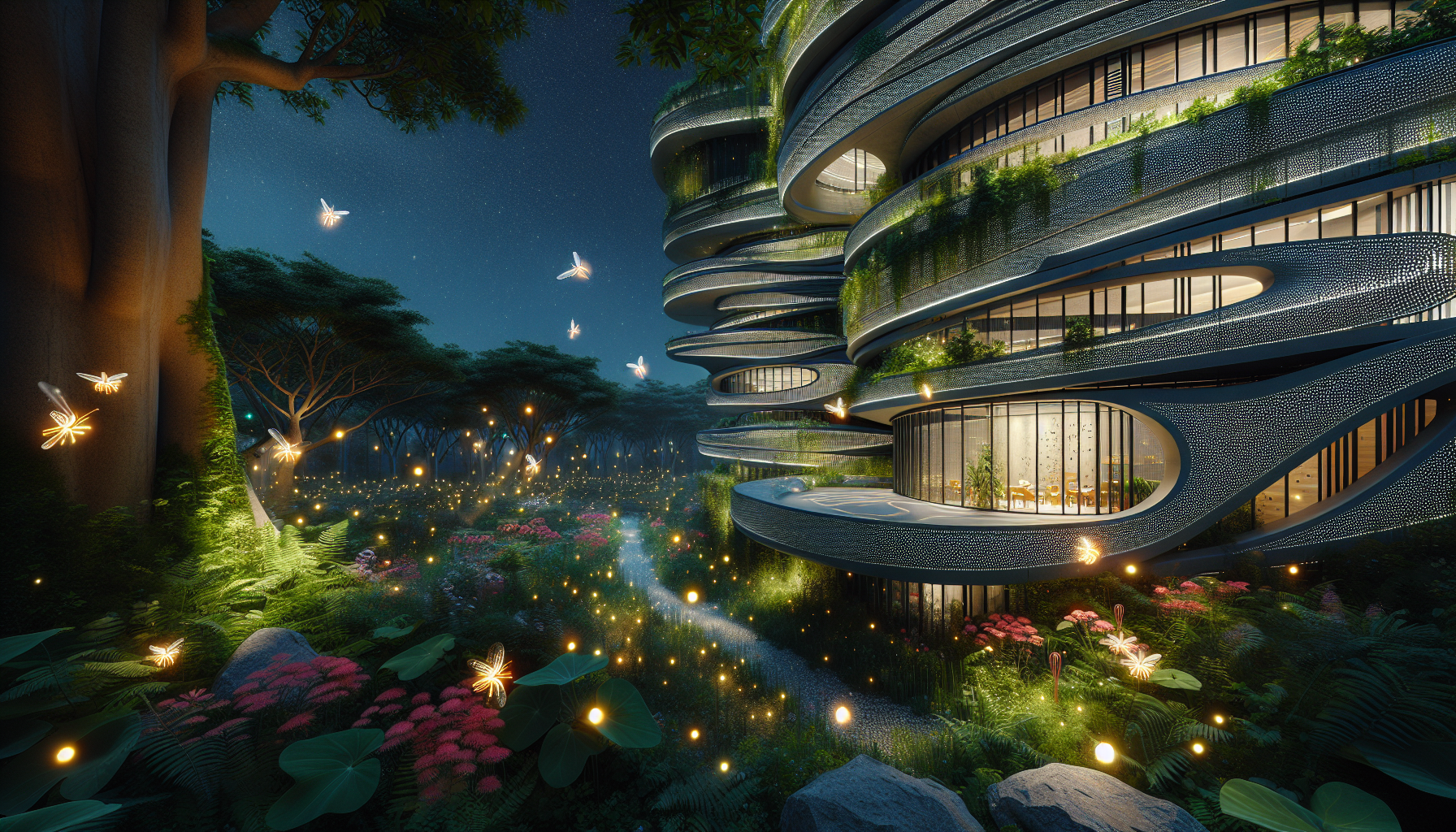
Conclusion
Concluding our exploration into the fascinating world of Firefly Constructions and their microstructural designs, we have traversed a journey that bridges the realms of biology, architecture, and environmental aesthetics. This innovative approach not only enhances our understanding of ecological interactions but also provides practical solutions for sustainable development.
Throughout this article, we have delved into the intricacies of how specific microstructural designs in architecture can attract particular insect species, such as fireflies, while simultaneously beautifying our surroundings. We began by understanding the biological and ecological significance of fireflies, whose luminescent beauty and role as pollinators make them essential contributors to biodiversity. By mimicking natural patterns and structures, architects and designers are crafting environments that cater to these insects, fostering ecosystems that are both functional and aesthetically pleasing.
One of the key aspects discussed was the integration of biomimicry in design. This approach allows architects to draw inspiration from nature’s own solutions, leading to innovations that are both sustainable and ecologically harmonious. By studying the natural habitats of fireflies, designers can replicate conditions that encourage their presence, thereby enhancing local biodiversity and contributing to environmental conservation efforts.
Moreover, the discussion highlighted the technological advancements that have made it possible to implement these designs on a larger scale. From 3D printing technologies to advanced materials that mimic natural textures and patterns, the fusion of technology with ecological design is paving the way for a new era of architectural innovation. This not only benefits the environment but also promotes a sense of wonder and connection with nature among urban dwellers.
Importantly, we explored the broader implications of these designs on urban planning and community engagement. As cities continue to expand, integrating nature into urban spaces becomes increasingly vital. Firefly Constructions serve as a reminder of the potential for harmony between human development and the natural world, offering spaces that promote biodiversity and provide residents with a direct connection to nature’s beauty.
The aesthetic value of these constructions cannot be overstated. By incorporating elements that attract fireflies and other insects, these designs transform ordinary spaces into magical environments that captivate the human imagination. They invite us to reconsider our relationship with nature and inspire a sense of stewardship and responsibility for the natural world.
In conclusion, the intersection of architecture, ecology, and technology in the realm of Firefly Constructions represents a transformative approach to sustainable design. By embracing the principles of biomimicry and ecological integration, we can create spaces that are not only functional and beautiful but also vital to the preservation of biodiversity.
As we reflect on the insights gained from this exploration, it becomes clear that the importance of such initiatives cannot be overstated. They offer a pathway to a more sustainable future, where human development and ecological preservation go hand in hand. We encourage you, our readers, to consider how you might incorporate these ideas into your own lives and communities. Whether through supporting local ecological initiatives, advocating for sustainable urban planning, or simply taking a moment to appreciate the natural wonders around you, each action contributes to a larger movement towards environmental stewardship.
Let’s continue the conversation and share the knowledge we’ve gained. Comment below with your thoughts and experiences, and feel free to share this article with others who may be inspired by the potential of Firefly Constructions. Together, we can illuminate the path to a brighter, more sustainable future 🌿✨.
For further reading and exploration, consider visiting sources such as the Biomimicry Institute, which provides a wealth of information on nature-inspired design, or delve into the Journal of Insect Conservation for deeper insights into the role of insects in ecological preservation.
Toni Santos is a visionary artisan and conceptual designer who channels the beauty of living organisms into structural expression. At Zureste, Toni explores the intricate elegance of insect anatomy, organic flow, and bioinspired design to create art that feels both natural and otherworldly.
Each creation Toni brings to life reflects a harmonic tension between structure and softness, wildness and control — echoing the complex intelligence found in the natural world. From beetle-like silhouettes to root-shaped contours, his work blurs the lines between biology, sculpture, and modern art.
Guided by fascination for metamorphosis, evolution, and pattern in nature, Toni’s pieces embody transformation. His BioLight Collection and conceptual series like Insect Type and Structure Aesthetics offer viewers more than aesthetic value — they present immersive experiences of living design.
As the creative force behind Zureste, Toni invites us to rethink beauty, architecture, and identity through a new lens — one shaped by wings, bones, spirals, and the microscopic poetry of the organic.
🌿 His creations reflect:
-
Design deeply rooted in the geometry of life
-
Inspiration from insects, roots, and the unseen natural order
-
A blend of science, spirituality, and visual storytelling
Whether you’re a lover of strange beauty, an admirer of evolution’s artistry, or a creative mind seeking something different, Toni welcomes you into a world where living forms become meaning, and surreal becomes sublime.


